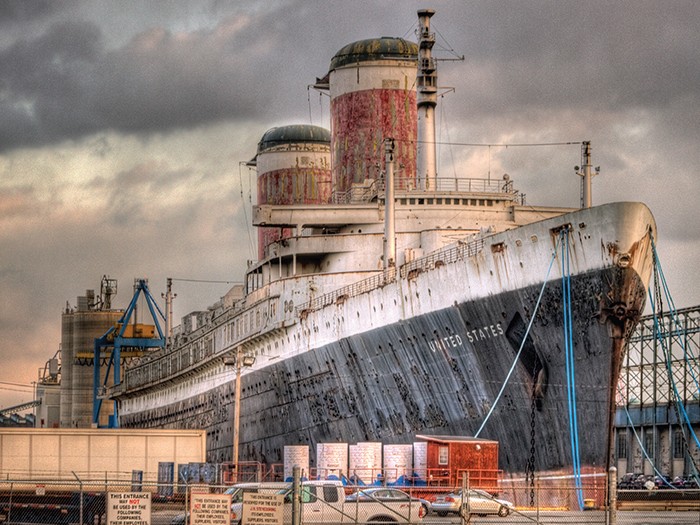Specialty Insurance
Smooth Sailing

When the Lettie G. Howard first sailed the North Atlantic in 1893, she faced fierce winter storms, icy waters and long stretches at sea.
Today, as a designated historic landmark and teaching vessel docked at New York’s South Street Seaport Museum, life is calmer for the fully restored 125-foot wooden schooner.
But historic vessels like the Lettie G. Howard face many other challenges, including unique risk and liability issues. Luckily, there are a small number of specialty insurers that know exactly how to manage those risks.
Historic vessels range from elegant tall ships to massive steel icons of World War II and even riveted iron ships. Their insurance needs can vary based on construction, purpose, mobility, uniqueness and ownership.
“It’s primarily a marine risk, so you’re going to have hull and P&I, and liabilities for the vessel,” said Robert Riske, senior vice president at Worldwide Facilities LLC.
“The larger ones have some shore-side operations, which might involve a gift shop, the parking lot, etc., so you can get involved in a regular GL-type package risk as well.”

Simon Winter, director, Simon Winter Marine Ltd
“We call them commercial combined liability policies. It is one policy packaged together in different sections,” said Simon Winter, director of the UK-based Simon Winter Marine Ltd.
Typical sections include damage to the hull, marine third-party liability, public liability, and employers’ liability, as well as personal accident and crew medical, and, for income-earning vessels, loss of use.
One of the biggest challenges of insuring historic vessels is determining an accurate valuation.
“At the bottom end you’ve got scrap value and at the top side you’ve got whatever historical value you can put to it. Then you’ve got the economic value, as in, this is going to bring visitors to either the community or the vessel or the organization,” said Riske.
Surveyors will generally try to base valuations on purchase price, according to Gene McKeever, vice president, board member and marine insurance specialist at Allen Insurance and Financial.
“There is a reason for that. … If someone were to buy one of these vessels for … $1.2 million, and the replacement cost is $4.5 million, you may be creating a moral hazard by that person going, ‘Well, if I insure for $4.5 million, the thing is worth more resting on the bottom of the ocean than it is in my hands.’
“So the underwriters say no, if the person bought it for $1.2 million that’s what they want it to insure it for,” said McKeever.
Donated vessels have no sale price, however, leaving underwriters searching for sales of comparable vessels, a particular challenge for unique vessels.
Ultimately, valuation can involve more art than science.
“Underwriters would always prefer to underwrite a risk at market value. An owner of an historic vessel … would much rather be insuring for an amount nearer to new-build value, and those values can vary by millions.
“We always tend to achieve a compromise, but it involves a negotiation between the three parties: the broker, the underwriter, and whichever entity is writing the valuation,” said Winter.
Maintaining historic vessels also presents challenges.
“Generally we ask that those vessels have a maintenance schedule, so this year we’re going to do the planking, next year … the framing, the year after that we’re going to work on the deck beams, that sort of stuff,” said McKeever.

Gene McKeever, vice president, board member and marine insurance specialist, Allen Insurance and Financial
“Many of them actually have the historic plates … from the government, being a national historic place. They have to be very precise and very careful … because they have to keep them totally authentic.”
At the same time, he said, the vessels use modern fasteners and modern electronics.
“The hull insurance is easier to get than the liability. … You know you are looking at a finite thing when you are looking at the hull and its value. Liability is not finite at all.
“When someone gets injured … there’s no dollar limit on what that injury might cost.”
Riske agreed.
“Liability is the real exposure. Underwriters are concerned with the numbers of volunteers, crew, visitors or passengers, special events, educational events involving minors, fireworks displays, and on-shore activities, like ticket sales, cafes, souvenir shops, parking.”
Many historic vessels rely heavily on volunteers and they can all count as crew. Especially in the case of ships from World War II, they are often sailors who originally served on those ships, meaning an aging population working on aging equipment.
“Once it’s operational, you’ve got numerous public liabilities,” said Riske, citing steep ladders, low bulkheads, possible asbestos, and sometimes food and special events.
“They present a challenge for trying to get the proper pricing for them, but most of all they’re a good risk.”
Trip and Tow
While some historic vessels, known as Dockside Attractions, are no longer mobile, most are sometimes moved for events, maintenance or relocation, under their own power or towed by tugboats.
“How do you insure them when they’re generally speaking pretty fragile vessels and they have to go out on the big water to get to the next port? That sometimes presents a lot of challenges,” said McKeever.
Foreign vessels entering U.S. or Canadian waters confront issues involving pollution liability, jurisdictional disputes, and liability limits.
“If a vessel needs to be towed … they find a reputable tug boat operator, who will say they need a Trip and Tow survey. … ‘Can this vessel stand the stresses of being towed, whatever way it is being towed?’
“And that survey goes to the underwriter so they can determine if they are going to insure the trip,” McKeever said.
Towing a large vessel in international waters can involve another set of laws and requirements.
“A majority of towing of large vessels tends to be done under TOWCON, which is a set of terms and conditions that is internationally recognized,” said Winter.
Foreign vessels entering U.S. or Canadian waters confront issues involving pollution liability, jurisdictional disputes, and liability limits. Ships from Europe often enter Canadian waters first, where the Transport Canada, the Canadian coast guard, will stop them and ask for a Certificate of Financial Responsibility (COFR).
“That’s the first thing they ask for and that’s actually pollution coverage. Most of them can’t produce it because they generally don’t have a problem with pollution from historic vessels … but neither the Canadians nor the U.S. will allow them in federal waters without it,” said McKeever.
Even tall ships and other wooden vessels must produce a COFR, but McKeever said that even though they have bottom paint and typically carry a diesel generator, they tend not to cause environmental problems.
“I have not seen a pollution claim against a tall ship and we’ve been doing it for a long time.”
The U.S. and Canada also require greater liability coverage than other countries.
And if, as is often the case, the vessel’s coverage stipulates local jurisdiction — meaning civil suits must be adjudicated in the vessel’s home port, according to its laws — both the U.S. and Canada require coverage that allows disputes to be settled in their respective courts.
Insurance Requirements Vary by Jurisdiction
Jurisdictional issues can be a factor more locally as well, said Maggie Flanagan, operations manager for the nonprofit New York Harbor Waterfront Alliance.

Maggie Flanagan, operations manager, New York Harbor Waterfront Alliance
“Even different docks within the same city can have different requirements. … It’s not only city, state, federal — there’s also various park service agencies, economic development entities that manage certain parts of the waterfronts,” she said.
“The differences come in insurance coverage requirements for liability insurance put forth by the various docks in a port. … In New York City, between private lease holders on the waterfront, various government agencies and multiple park authorities, there are widely different requirements for insurance to be able to dock at the various docks,” said Flanagan, who worked with several historic and replica ships before joining the Alliance, which counts several historic ships among its 800 members.
Different ownership types have different needs as well.
Government-owned vessels tend to be self-insured. For-profit owners like restaurants have special requirements. Educational vessels are a whole separate subcategory.
“You’re likely to have minors involved … and that always has its challenges for insurance, especially if there’s an overnight program … you’ve got parental consents and all the things you can imagine go with it,” said Riske.
The majority of historic vessels, however, are governed by nonprofits.
“You are dealing with a board of directors, so typically you are dealing with non-insurance people,” said Riske.
Nonprofits also tend to have tight budgets, and insurance can take up a substantial portion of them.
The SS United States, now docked in Philadelphia, was a technical marvel when it was launched in 1952, and has served since then, “as an iconic symbol of American technological innovation and engineering might,” said Susan Gibbs, executive director of the Philadelphia-based conservancy that is searching for a permanent home for the vessel.
“The ship still holds the transatlantic speed record, achieved on her maiden voyage using only two-thirds of her power.
“As a Naval auxiliary, she was packed with top-secret defense features and could be quickly converted to transport 15,000 troops more than 10,000 miles without refueling,” said Gibbs.
But the conservancy has been struggling to cover the ship’s carrying costs, and almost a quarter of the conservancy’s $60,000 monthly expenses go toward insurance.
“It can be a significant part of the budget,” said Flanagan.
All these factors combine to make a good broker invaluable.
“We are all nonprofits doing our missions and there is not a lot of extra resources in the office,” said Flanagan
“You look at the list of requirements and you’re like, ‘Oh my gosh!’ ….You get these requirements from the permit and then you cut and paste to the insurance broker and say, ‘Help me please!’ ”










